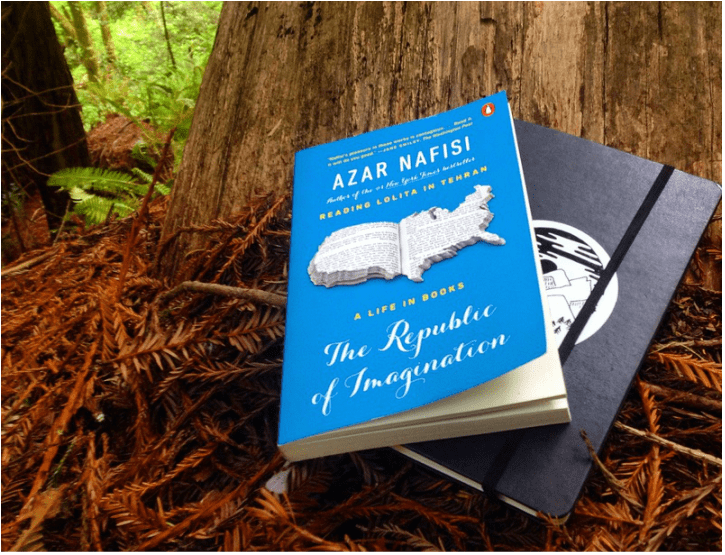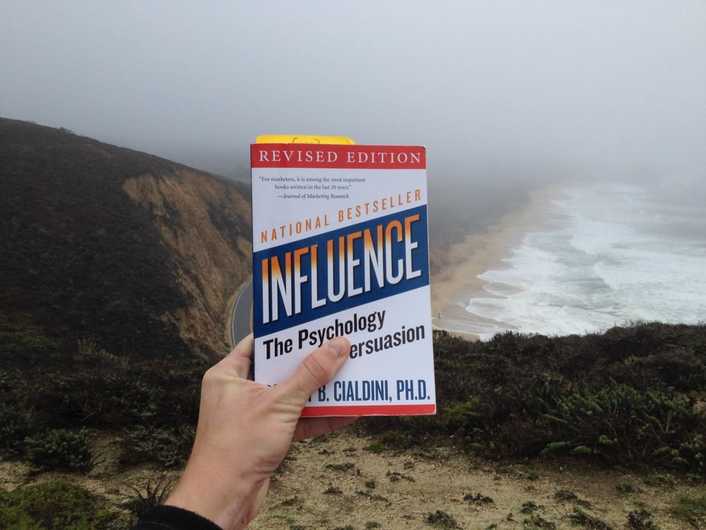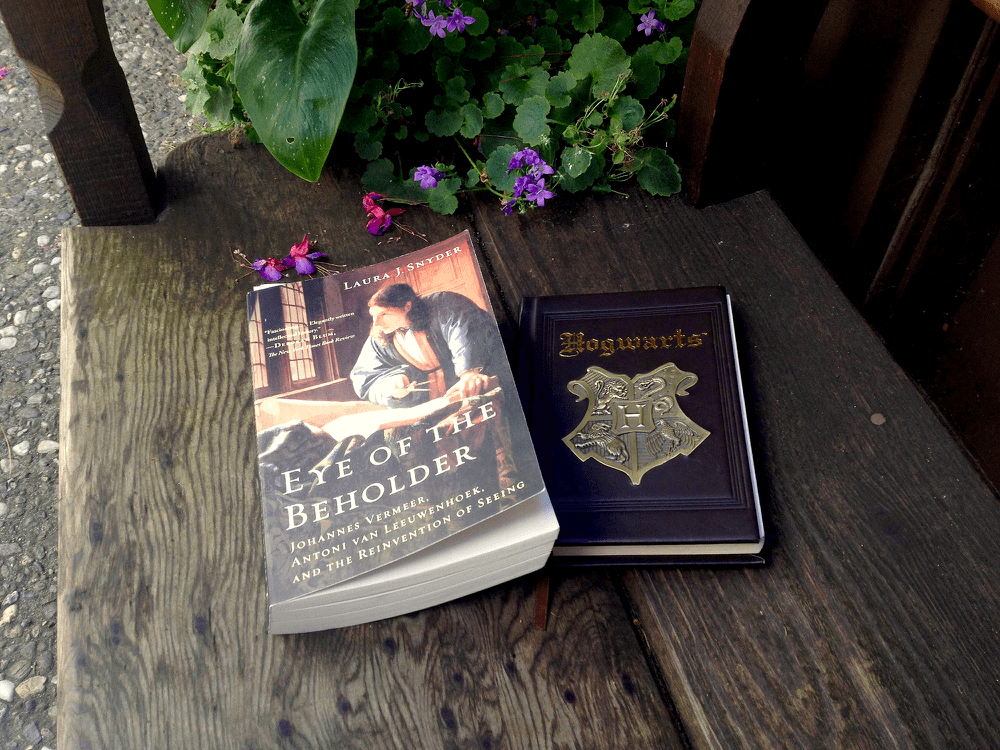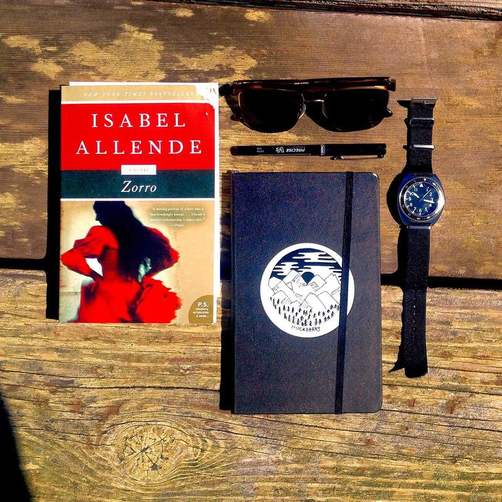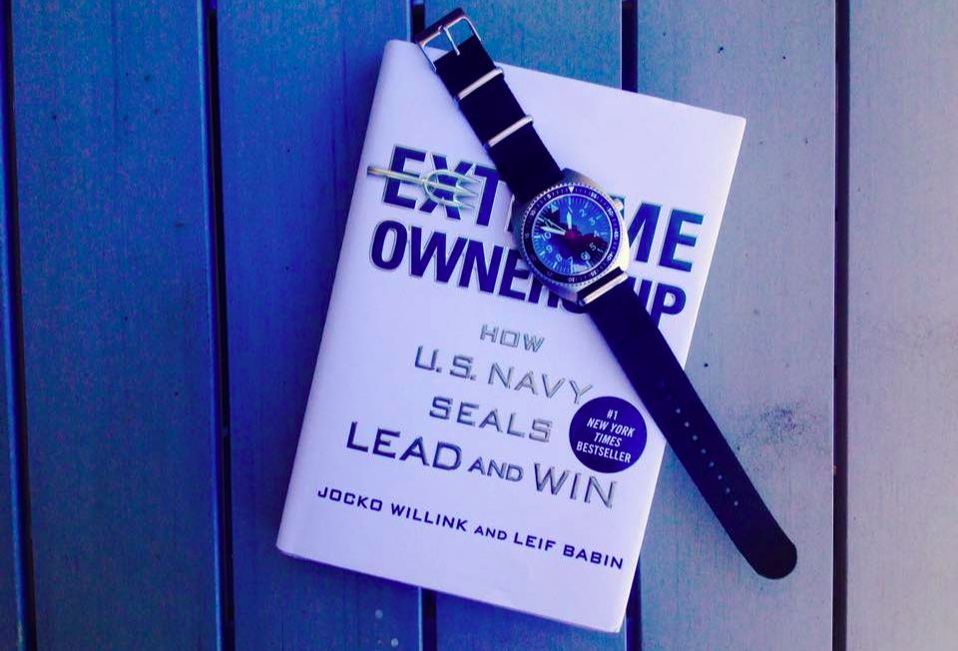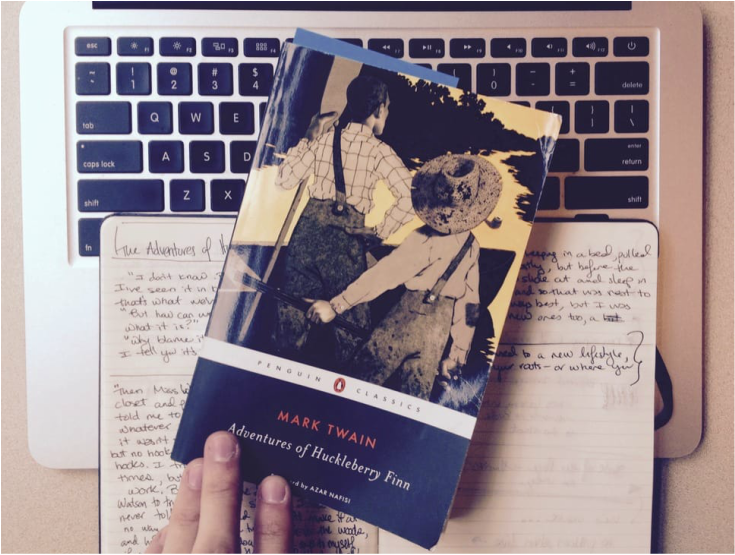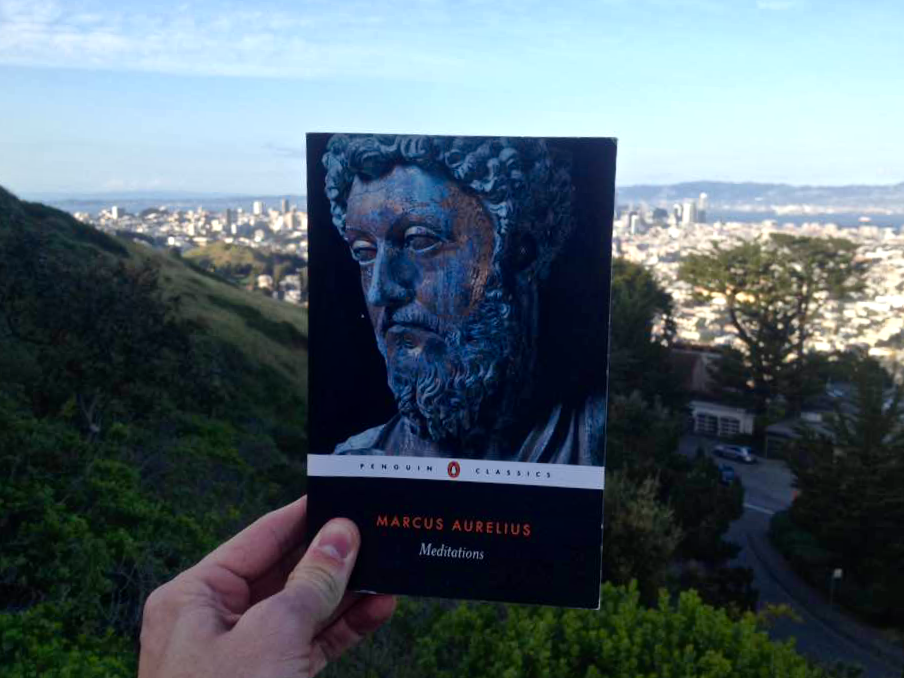| Dear Friends and Readers: I cannot believe that 2017 is a week away. The year has absolutely flown by. It's been unforgettable with lots of highs and a few lows plus 61 books mixed in. Per tradition, I selected my Top 10 and some runners up for your consideration below. Whether you try one or all of them, I hope you get as much out of them as I have. If you decide to go your own way, that's cool too, but be sure to drop me a line wherever you land. Here's to a healthy, wealthy, and wise New Year! JG P.S. All set on books? Try Firewatch, a first-person video game where you play Henry, a guy who signs up for a summer-long shift as a fire lookout in Shoshone National Forest. Mysteries ensue! |
10. ADVENTURES OF HUCKLEBERRY FINN BY MARK TWAIN
I was supposed to read this in high school, but I didn't. I was too busy reading giant books on the American Civil War. But lately, I've been seeing quotes of Mark Twain on various social media feeds and even a couple of coffee mugs. Twain's wit, irony, and honesty has always caught my eye, so when I found Huck Finn looking lonely on the shelf of an awesome bookstore in Big Sur, I took the plunge.
Now, I've never been a fan of reading twangs and dialects — even Hagrid's slang in Harry Potter was tough. This, coupled with the time-specific elements of the story (the notes in the back of the Penguin edition help a TON), made the book a start-and-stop experience, but one I'm still glad I took.
Huck's flight from an abusive father down the Mississippi River with a runaway slave named Big Jim was a strange mixture of fairy-tale like adventure and dark social commentary. The laughs I experienced usually came with a grimace, as Twain explores the 'Sivilized' good-nature of certain characters with the ugliest of blind spots on the topic of religion and race relations. It's still a relevant book for our time.
I also picked up Adventures of Tom Sawyer and A Connecticut Yankee in King Arthur's Court. Will be reading those in 2017 and report back.
Now, I've never been a fan of reading twangs and dialects — even Hagrid's slang in Harry Potter was tough. This, coupled with the time-specific elements of the story (the notes in the back of the Penguin edition help a TON), made the book a start-and-stop experience, but one I'm still glad I took.
Huck's flight from an abusive father down the Mississippi River with a runaway slave named Big Jim was a strange mixture of fairy-tale like adventure and dark social commentary. The laughs I experienced usually came with a grimace, as Twain explores the 'Sivilized' good-nature of certain characters with the ugliest of blind spots on the topic of religion and race relations. It's still a relevant book for our time.
I also picked up Adventures of Tom Sawyer and A Connecticut Yankee in King Arthur's Court. Will be reading those in 2017 and report back.
9. THE REPUBLIC OF IMAGINATION BY AZAR NAFISI
Back in late February, in an awesome bookstore in Big Sur, I picked up Huck Finn, Tom Sawyer, and A Connecticut Yankee in King Arthur's Court. The introduction to Huck Finn (which I went through after finishing the novel) was by Azar Nafisi, an Iranian-American teacher who emigrated in the 90's in part because of the increasing theocratic control of her curriculum.
The Republic of Imagination is a concept that Azar used with her sister and friends to describe an intellectual haven for readers, one that was once a part of Iranian culture, but is no longer allowed. The same, Azar believes, is true of America. While Iran's government bans books, Americans in large part have simply stopped reading. The disregard for the humanities whether by authoritarians wielding political power or by a myopic generation of non-readers, leads to a world, which Azar writes is suffering from a 'crisis of vision.'
Her book is as much a celebration of three beloved books of hers (which she believes encapsulates America's heroic attitude) as it is a defense of reading and a call to pick up a book or ten.
The Republic of Imagination is a concept that Azar used with her sister and friends to describe an intellectual haven for readers, one that was once a part of Iranian culture, but is no longer allowed. The same, Azar believes, is true of America. While Iran's government bans books, Americans in large part have simply stopped reading. The disregard for the humanities whether by authoritarians wielding political power or by a myopic generation of non-readers, leads to a world, which Azar writes is suffering from a 'crisis of vision.'
Her book is as much a celebration of three beloved books of hers (which she believes encapsulates America's heroic attitude) as it is a defense of reading and a call to pick up a book or ten.
8. INFLUENCE BY ROBERT CIALDINI
This book is phenomenal. I feel like I learned more about human behavior in its 280 pages than a handful of psych college classes combined. Cialdini doesn't stop at just theory, expanding the scope of the principles he case-studies to everyday encounters and extraordinary events:
You can read my full recommendation here.
- The role of Social Proof and Authority in consumer behavior
- How tendencies of Reciprocity affect business and personal relationships
- Commitment and Consistency used for goal-setting and self-improvement
You can read my full recommendation here.
7. WHY WE BUY BY PACO UNDERHILL
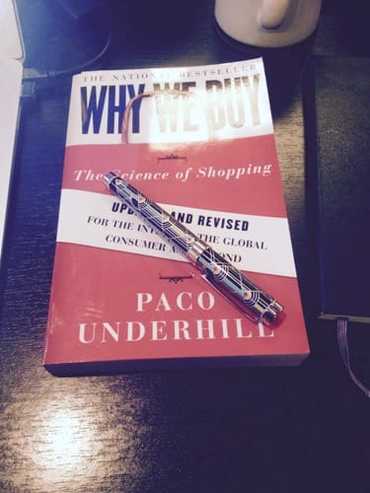
I really could not put this one down. Self-proclaimed 'retail anthropologist,' Paco Underhill, explores his findings on all things customer behaviors in brick and mortar stores — and there are some fascinating discoveries. For example, the 'butt brush' phenomenon:
If a customer, especially a female one, is touched from behind by another customer, a worker, or an intrusive display / signage, they leave the aisle or even the store. The customer (consciously or subconsciously) feels unsafe. Then there's the whole not-seeing-items issue: only 20% of items in a store are ever seen by customers — and not from a lack of trying on the customer's part. This makes aisle-end displays, signs at eye-level, and even chevroning (setting aisles at 45 Degrees vs conventional 90 Degrees) super helpful and lucrative. Little changes. Big results.
I work in e-commerce, but I still see a ton of overlap and parallels to draw from Paco's physical store findings. For $9, the number of ideas to test and implement makes buying this book feel like downright shop-lifting. It's a terrific blend of psychology, marketing strategy, and yes, even human nature.
You can read my full review for Why We Buy here.
If a customer, especially a female one, is touched from behind by another customer, a worker, or an intrusive display / signage, they leave the aisle or even the store. The customer (consciously or subconsciously) feels unsafe. Then there's the whole not-seeing-items issue: only 20% of items in a store are ever seen by customers — and not from a lack of trying on the customer's part. This makes aisle-end displays, signs at eye-level, and even chevroning (setting aisles at 45 Degrees vs conventional 90 Degrees) super helpful and lucrative. Little changes. Big results.
I work in e-commerce, but I still see a ton of overlap and parallels to draw from Paco's physical store findings. For $9, the number of ideas to test and implement makes buying this book feel like downright shop-lifting. It's a terrific blend of psychology, marketing strategy, and yes, even human nature.
You can read my full review for Why We Buy here.
6. THE 33 STRATEGIES OF WAR BY ROBERT GREENE
In The 33 Strategies of War, Robert Greene returns to dozens of history's battlefields with the sole mission of extracting winning strategies — ones that can be applied to all areas of life. "War, Greene writes in the preface, "is not some separate realm divorced from the rest of society. It is an eminently human arena, full of the best and worst of our nature."
The battlefields Greene takes us back to are as diverse as could be; from a besieged ancient Athens to envy-laced Hollywood studios, from Roosevelt's Depression-era campaign trail to the dark Vietnamese jungles. We may not be leading a ragtag army outnumbered 20 to 1, suffering from malnutrition with disrupted supply lines. Or surrounded by a network of spies, saboteurs and assassins plotting our downfall. Or gifted with a genius-level of focus and foresight and charisma to ask the impossible of a nation. But the principles for success in any area of human endeavors, Greene contends, are as timeless as they are adoptable.
But a word of warning:
"The world is full of people looking for a secret formula for success and power. They do not want to think on their own; they just want a recipe to follow. They are attracted to the idea of strategy as a series of steps to be followed toward a goal. They want these steps spelled out for them by an expert or a guru. Believing in the power of imitation, they want to know exactly what some great person has done before. Their maneuvers in life are as mechanical as their thinking...the essence of strategy is not to carry out a brilliant plan that proceeds in steps; it is to put yourself in situations where you have more options than the enemy does."
Enemies, adversaries, opponents, competitors — they come into our lives in various ways: passive-aggressive co-workers with hidden agendas and vendettas, business competitors in your own industry smearing your work or poaching your resources and talent pools, shoestring marketing budgets, bike crashes...there's no shortage of obstacles to maneuver around to reach your goals.
As Greene recommends in his other great works Mastery (read my rec here) and The 48 Laws of Power(read my rec here), take his advice as a starting point to test in the field and adapt to your own situations and interests.
You can read my full recommendation of The 33 Strategies of War here.
The battlefields Greene takes us back to are as diverse as could be; from a besieged ancient Athens to envy-laced Hollywood studios, from Roosevelt's Depression-era campaign trail to the dark Vietnamese jungles. We may not be leading a ragtag army outnumbered 20 to 1, suffering from malnutrition with disrupted supply lines. Or surrounded by a network of spies, saboteurs and assassins plotting our downfall. Or gifted with a genius-level of focus and foresight and charisma to ask the impossible of a nation. But the principles for success in any area of human endeavors, Greene contends, are as timeless as they are adoptable.
But a word of warning:
"The world is full of people looking for a secret formula for success and power. They do not want to think on their own; they just want a recipe to follow. They are attracted to the idea of strategy as a series of steps to be followed toward a goal. They want these steps spelled out for them by an expert or a guru. Believing in the power of imitation, they want to know exactly what some great person has done before. Their maneuvers in life are as mechanical as their thinking...the essence of strategy is not to carry out a brilliant plan that proceeds in steps; it is to put yourself in situations where you have more options than the enemy does."
Enemies, adversaries, opponents, competitors — they come into our lives in various ways: passive-aggressive co-workers with hidden agendas and vendettas, business competitors in your own industry smearing your work or poaching your resources and talent pools, shoestring marketing budgets, bike crashes...there's no shortage of obstacles to maneuver around to reach your goals.
As Greene recommends in his other great works Mastery (read my rec here) and The 48 Laws of Power(read my rec here), take his advice as a starting point to test in the field and adapt to your own situations and interests.
You can read my full recommendation of The 33 Strategies of War here.
5. MADE TO STICK BY CHIP HEATH AND DAN HEATH
So glad I picked this one up on the strong recommendation of a coworker. In Made to Stick, Chip Heath and Dan Heath identify and expand upon what they view are the six most essential characteristics of making ideas 'stick,' that is, understood and recalled later by an audience. Those six characteristics are: Simple, Unexpected, Concrete, Credible, Emotional, Stories, easily remembered by the acronym SUCCES. Each of the six characteristics have a dedicated chapter that's loaded with examples from psychology studies and real-world business situations.
If writing or speaking is in any way a part of your career, I think it will help improve your communication skills immensely — and quickly. For example, a few months ago at work I was tasked with encouraging a certain group of customers to leave reviews — good or bad or mixed — on their recent shopping experiences. It was my job to craft the perfect email that A. would get opened B. get read and C. get them to leave a review. Spending 10 minutes or so with my notes on Made to Stick in front of me, I got to work on drafting THE subject line that would definitely get peopled to open it. (Simple, Unexpected, and Concrete chapters in particular helped). I came up with this: $10 For 45 Seconds
+ Simple: Trade $10 (in store credit) for 45 seconds (to write a review)
+ Unexpected: We're basically giving them free money
+ Concrete: $10 and 45 seconds > 'We want to know your thoughts' (or something vague like that)
I'm not saying that this is THE best subject line ever, but it was strong based upon open rates — over 75%. No doubt, there's a lot of improvements I can be making to my communication, but Made to Stick is already helping.
You can read my full recommendation for Made to Stick here.
If writing or speaking is in any way a part of your career, I think it will help improve your communication skills immensely — and quickly. For example, a few months ago at work I was tasked with encouraging a certain group of customers to leave reviews — good or bad or mixed — on their recent shopping experiences. It was my job to craft the perfect email that A. would get opened B. get read and C. get them to leave a review. Spending 10 minutes or so with my notes on Made to Stick in front of me, I got to work on drafting THE subject line that would definitely get peopled to open it. (Simple, Unexpected, and Concrete chapters in particular helped). I came up with this: $10 For 45 Seconds
+ Simple: Trade $10 (in store credit) for 45 seconds (to write a review)
+ Unexpected: We're basically giving them free money
+ Concrete: $10 and 45 seconds > 'We want to know your thoughts' (or something vague like that)
I'm not saying that this is THE best subject line ever, but it was strong based upon open rates — over 75%. No doubt, there's a lot of improvements I can be making to my communication, but Made to Stick is already helping.
You can read my full recommendation for Made to Stick here.
4. POOR CHARLIE'S ALMANACK BY CHARLIE MUNGER

Last April, my boss tapped me on the shoulder. "Hey. I'll buy you this..." — He puts a five-pound beast of a book in my hands — "...If you read it in one month." I say I will. 25 days later, it's finito. Poor Charlie's Almanack is a distillation and exploration of 11 talks that Charlie Munger, Warren Buffet's right-hand man and business partner, gave throughout his life.
The book is modelled loosely after his idol Ben Franklin's Poor Richard's Almanack, which I also highly recommend, but Munger delves into his 'Mental Models' theory, the idea that anyone can replicate his and Warren's financial success in any field, if he or she consistently references about 100 scientific, economic, and psychological models, by organizing them in a 'latticework' to reference in all areas of life. It's Munger's contention that academia doesn't teach young minds how to think. It "balkanizes" reality into departments and paralyzes us to synthesize our observations in the ecological world with physics and psychology and economics, and even the card game Bridge (!). Connecting the broad principles and laws across disciplines, Munger claims, is what's made him and Buffet so successful in business and life.
His thought process is fluid, interdisciplinary, and cautious. There's really so much to say, but honestly this is without a doubt one of the most informative reads I've experienced in my life. I'll be re-reading it for sure. Yes, it's a big book, but on the bright side it'll help with weight lifting goals too.
The book is modelled loosely after his idol Ben Franklin's Poor Richard's Almanack, which I also highly recommend, but Munger delves into his 'Mental Models' theory, the idea that anyone can replicate his and Warren's financial success in any field, if he or she consistently references about 100 scientific, economic, and psychological models, by organizing them in a 'latticework' to reference in all areas of life. It's Munger's contention that academia doesn't teach young minds how to think. It "balkanizes" reality into departments and paralyzes us to synthesize our observations in the ecological world with physics and psychology and economics, and even the card game Bridge (!). Connecting the broad principles and laws across disciplines, Munger claims, is what's made him and Buffet so successful in business and life.
His thought process is fluid, interdisciplinary, and cautious. There's really so much to say, but honestly this is without a doubt one of the most informative reads I've experienced in my life. I'll be re-reading it for sure. Yes, it's a big book, but on the bright side it'll help with weight lifting goals too.
3. EYE OF THE BEHOLDER BY LAURA SNYDER
In Eye of the Beholder, Snyder explores two Dutch visionaries of the 17th century, the artist Johannes Vermeer and scientist Antoni van Leeuwenhoek (pronounced Lay-ven-hook). Both lived in the city of Delft, on opposite ends of Market Square, a space smaller than a football field. While Vermeer painted his canvases with new oils and techniques (using a camera obscura to understand the nature of light), Leeuwenhoek created the first microscope, and observed the "new continent" now visible to mankind in the form of micro-organisms.
The book explores the richness of these two men's lives and their lasting impacts on the arts and sciences. It's this historical interplay of the arts and sciences that I found most refreshing though, which you don't have to look further than the book's cover to see: it features Vermeer's work, The Geographer, which depicts a man working on a map with his surveyor's tool, looking out his study's window in deep concentration. His eyes and face suggest he is observing not the the city streets outside, but to some unseen space, made visible from a certain perspective and understandable by his maps. It's a painting of a man of science, recreated so gloriously by a scientific approach to art.
This book is a celebration and reaffirmation of the role of the sciences in the arts, the arts in the sciences, and (in my view) a tactiful, but perhaps understated indictment of institutions and people opposed to this view — and even aiming to blind us from it.
The book explores the richness of these two men's lives and their lasting impacts on the arts and sciences. It's this historical interplay of the arts and sciences that I found most refreshing though, which you don't have to look further than the book's cover to see: it features Vermeer's work, The Geographer, which depicts a man working on a map with his surveyor's tool, looking out his study's window in deep concentration. His eyes and face suggest he is observing not the the city streets outside, but to some unseen space, made visible from a certain perspective and understandable by his maps. It's a painting of a man of science, recreated so gloriously by a scientific approach to art.
This book is a celebration and reaffirmation of the role of the sciences in the arts, the arts in the sciences, and (in my view) a tactiful, but perhaps understated indictment of institutions and people opposed to this view — and even aiming to blind us from it.
2. ZORRO BY ISABEL ALLENDE
Yeah, I know, I recommended another Zorro a few months ago. What can I say, I'm a sucker for historical romance adventures. And in my humble opinion, the Fox is much more human than even the best representation of Robin Hood.
Isabel Allende's Zorro is the origin story of the wily masked avenger who safeguards Old California from pirates, robbers, and corrupt politicians. The story is epic in scope, richly detailed, and I want more more more. Here's a passage I like in particular for obvious reasons:
Isabel Allende's Zorro is the origin story of the wily masked avenger who safeguards Old California from pirates, robbers, and corrupt politicians. The story is epic in scope, richly detailed, and I want more more more. Here's a passage I like in particular for obvious reasons:
| "About that same time, Captain Jose Diaz sent Alejandro de la Vega a crate of books a passenger had left on his ship somewhere near Ecuador. The crate was sealed tight as a drum when it arrived, but when opened, it revealed a fabulous cargo of epic poems and novels, yellowed, dog-eared volumes that smelled of honey and wax. Diego devoured them, even though his father scorned novels as a minor genre plagued with inconsistencies, basic errors, and personal dramas that were none of his business. The books became an addiction for Diego and Bernardo; they read them so often that they could recite them from heart. The world they lived in grew very small, and they began to dream of countries and adventures beyond the horizon." |
I also highly recommend Johnston McCulley's original pulp adventures from the 1920s. Reprinted and including some of the original artwork and covers, the stories are a ton of fun. You can read my full recommendation of it here.
1. CYRANO DE BERGERAC BY EDMOND ROSTAND
In Rostand's Cyrano de Bergerac, we meet a legendary Cadet (nobleman turned soldier) whose sword skills are known across 17th Century France, and equally matched by his wit and bravery. All are on full display in the first Act, as the man humiliates a rival by orating a poem as they duel and finally, "When I end the refrain, 'Thrust Home'." Victorious, Cyrano apologizes to the theater owner, in whose establishment they dueled and interrupted a performance, and gives him a bag of coins — his entire inheritance! When asked why he would give up his great fortune, Cyrano answers for the sake of "a great gesture" — paying for his interruption and defeating a bully.
Now alone in the emptied theater, Cyrano confesses to his best friend, Le Bret, his Achilles Heel: he is paralyzed to confess his love to a young woman named Roxane, because of his ugly nose. The Cadet will battle one hundred men single-handed to save a friend — which he does sucessfully later, but he cannot muster the courage to speak the truth to his secret lover, for fear of certain rejection. He even goes so far as to refuse to cry about it, because the idea of something as pure as tears spilling down his nose, would be an affront to sorrow itself. They're interrupted then by Roxane's maidservant, who requests Cyrano meet with her tomorrow to discuss a private matter. He agrees and she leaves. Dumfounded but exuberant that Roxane knows he exists, let alone might love him back, Cyrano cries out to Le Bret, "BRING ME GIANTS!"
What happens in the next four acts had me turning pages and so rivetted that I was actually late to work because I had to finish it. Rostand's grand view of life, of what men and women can aspire to be, and the sheer wit on display via Cyrano, Roxane, and the other characters, is something worth celebrating. In case you want a companion to reading Cyrano, I really enjoyed this performance from Bob Jones University.
Afterward, I picked up Chantecler and The Romancers by Rostand immediately. Chantecler is a 4 Act comedy that takes place on a French farm. The protagonist, a rooster, whose flamboyance and self-crowned importance of causing the sun to rise every morning, has the other farm animals secretly sneering and plotting against him. Will report back soon.
Nerding out over plays too? I love these seven.
Now alone in the emptied theater, Cyrano confesses to his best friend, Le Bret, his Achilles Heel: he is paralyzed to confess his love to a young woman named Roxane, because of his ugly nose. The Cadet will battle one hundred men single-handed to save a friend — which he does sucessfully later, but he cannot muster the courage to speak the truth to his secret lover, for fear of certain rejection. He even goes so far as to refuse to cry about it, because the idea of something as pure as tears spilling down his nose, would be an affront to sorrow itself. They're interrupted then by Roxane's maidservant, who requests Cyrano meet with her tomorrow to discuss a private matter. He agrees and she leaves. Dumfounded but exuberant that Roxane knows he exists, let alone might love him back, Cyrano cries out to Le Bret, "BRING ME GIANTS!"
What happens in the next four acts had me turning pages and so rivetted that I was actually late to work because I had to finish it. Rostand's grand view of life, of what men and women can aspire to be, and the sheer wit on display via Cyrano, Roxane, and the other characters, is something worth celebrating. In case you want a companion to reading Cyrano, I really enjoyed this performance from Bob Jones University.
Afterward, I picked up Chantecler and The Romancers by Rostand immediately. Chantecler is a 4 Act comedy that takes place on a French farm. The protagonist, a rooster, whose flamboyance and self-crowned importance of causing the sun to rise every morning, has the other farm animals secretly sneering and plotting against him. Will report back soon.
Nerding out over plays too? I love these seven.
* * *
OTHERS I LOVED
* * *
It's hard to only pick 10, so I'm cheating a bit!
These are also fantastic...
These are also fantastic...
SHADOW DIVERS BY ROBERT KURSON

Shadow Divers came as a recommendation from Ryan Holiday and after Kurson's Pirate Hunters this past summer, it was a done deal. The story of a ragtag group of adrenaline junkies, expert fishermen, deep sea welders, and treasure hunters to locate a Nazi U-boat off the coast of New Jersey was an incredibly fun read. And not just because of the guys' sense of humor.
"[The Shadow Divers] saw," Kurston writes, "stories in the Modiglianied faces of broken ships, frozen moment in a nation's hopes or a Captain's dying instinct or a child's potential, and they experienced these scenes unbuffered by curators or commentators or historians, shoulder to shoulder with life as it existed at the moment it had mattered most."
You can read my full recommendation here.
"[The Shadow Divers] saw," Kurston writes, "stories in the Modiglianied faces of broken ships, frozen moment in a nation's hopes or a Captain's dying instinct or a child's potential, and they experienced these scenes unbuffered by curators or commentators or historians, shoulder to shoulder with life as it existed at the moment it had mattered most."
You can read my full recommendation here.
THE RIGHT WAY TO DO WRONG BY HARRY HOUDINI
I've written about Houdini before and recommended this exceptional biography on him: The Secret Life of Harry Houdini two summers ago. So, it was only a matter of time before I picked up the Handcuff King's own writings. The man was as much a master escape artist as he was self-marketer and brand-builder. This amazingly-titled book is a peek into the early twentieth century landscape of real-life crime, on-stage magic, and off-stage rivalries.
What I gleaned most from it wasn't the various details so much as the overall approach that he took to building a persona and then communicating that to the world. There were tons of magicians ripping off Houdini in his hay-day (see: The Great Kleppini), but his formula for beating them was a strategic marketing system: more press, better press, and knowing exactly what his audience wanted. One autograph he signed says it best: "My brain is the key that sets me free."
You can read my full recommendation here.
What I gleaned most from it wasn't the various details so much as the overall approach that he took to building a persona and then communicating that to the world. There were tons of magicians ripping off Houdini in his hay-day (see: The Great Kleppini), but his formula for beating them was a strategic marketing system: more press, better press, and knowing exactly what his audience wanted. One autograph he signed says it best: "My brain is the key that sets me free."
You can read my full recommendation here.
POETICS BY ARISTOTLE
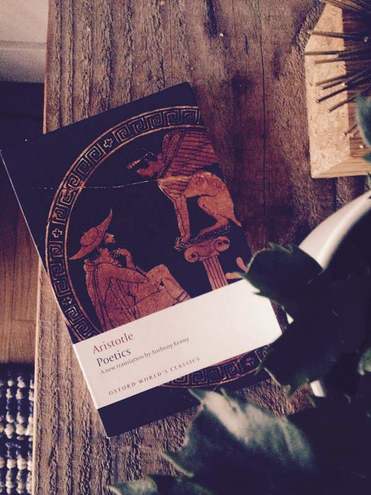
Aristotle's Poetics had been on my to-read list for years, ever since reading The Fountainhead by Ayn Rand in college. Rand adored Aristotle in large part for his views on art, one of which was that art is more important than history because while history records what men have done, art shows men what might be and ought to be.
I have to admit, I was a little wary of starting it, because I've been told by a lot of friends that Aristotle is 'dense' and 'difficult,' though I think they were referring more to his Nicomachean Ethics. Poetics is short; about 70 pages, though very concise for all the topics he explores: the role of art in a person's life, the differences between epic poems (Homer) and tragedies (plays like those of Sophocles), the ingredients for good plot, the exact nature of plot, and even predictions for where the written arts in Aristotle's view should move toward.
Side note, there is an excellent movie about Aristotle's impact on philosophy. It's called The Name of the Rose, in which a Franciscan monk (played by Sean Connery) seeks to solve a murder case by use of logic, and battles against the Catholic priests' more Plato-influenced approach. (Plato was Aristotle's mentor, and their philosophies are in many ways the opposite of one another)
I have to admit, I was a little wary of starting it, because I've been told by a lot of friends that Aristotle is 'dense' and 'difficult,' though I think they were referring more to his Nicomachean Ethics. Poetics is short; about 70 pages, though very concise for all the topics he explores: the role of art in a person's life, the differences between epic poems (Homer) and tragedies (plays like those of Sophocles), the ingredients for good plot, the exact nature of plot, and even predictions for where the written arts in Aristotle's view should move toward.
Side note, there is an excellent movie about Aristotle's impact on philosophy. It's called The Name of the Rose, in which a Franciscan monk (played by Sean Connery) seeks to solve a murder case by use of logic, and battles against the Catholic priests' more Plato-influenced approach. (Plato was Aristotle's mentor, and their philosophies are in many ways the opposite of one another)
ZORRO: THE COMPLETE PULP ADVENTURES
BY JOHNSTON MCCULLEY
BY JOHNSTON MCCULLEY
In Zorro: The Complete Pulp Adventures we meet Pedro Gonzalez, a power-lusting Sergeant in the Spanish army who's stationed in occupied California. He's with a few of his soldiers at the town's saloon, drinking himself into a rage over the 'pretty highwayman,' Zorro, who he claims has been 'terrorizing' the main road between Los Angeles and San Francisco. The Sergeant's reports know that Zorro is not a thief or pirate and only targets those who hurt the indigenous peoples and citizens, but they decide not to correct their drunk superior officer.
Reaching a climax of rage, Sergeant Gonzalez swears to uncover the identity of the masked Zorro, and wishes he would walk into the saloon right now so he could run his blade through his heart. As if on command, the door swings open... {END CHAPTER 1} ... and {START CHAPTER 2} ... Don Diego Vega enters. The handsome twenty-four-year-old is the son of a local self-made merchant, who owns many vineyards. Business has brought Diego to the saloon, but the young man is sure to defend Zorro, at least casually, from Gonzalez's boisterous smears. Then he leaves, but soon after the door swings open again, this time revealing a man cloaked in black, and wearing a mask... {END CHAPTER 2} ... and {START CHAPTER 3} ... It's Zorro.
I adore this kind of story: the melodramatic cliff-hangers at the end of each chapter, the relentlessly paced building of tension and conflict, the characterization through action. It's a pulp serial adventure, but it's more appetizing and rewarding to read — at least for me — than most books that come out today — ones with weak characters, no coherent plot, and way too much focus on depravity. Zorro is a man of action; confident, morally righteous, and sexual.
He's an eccentric, and self-aware of this fact. He loves to humiliate evil as much as he loves defeating it. He loves women — and one in particular, but he's unapologetically a flirt. He's cerebral; a trickster (Zorro is Spanish for 'fox') who must hide and choose his fights very tactfully. When I measure him against Robin of Locksley, a similar character in literature and pop culture, the English outlaw ends up feeling a bit colder, a bit more lifeless, and somewhat of a prude. There's a boldness, almost an arrogance, that Zorro exudes. In part, yes, he's playing the hero publicly, but it isn't just dress up. It's a way for Don Diego Vega, the handsome twenty-four-year-old, to buck tradition and step into his own reality where he is the master — defeating evil, getting his woman, and being a truly good man. If you ever want to get lost for an afternoon and see a glimpse of heroism check out Zorro. It'll make you feel like a kid again — and that's a truly good thing. Long live the Fox.
Reaching a climax of rage, Sergeant Gonzalez swears to uncover the identity of the masked Zorro, and wishes he would walk into the saloon right now so he could run his blade through his heart. As if on command, the door swings open... {END CHAPTER 1} ... and {START CHAPTER 2} ... Don Diego Vega enters. The handsome twenty-four-year-old is the son of a local self-made merchant, who owns many vineyards. Business has brought Diego to the saloon, but the young man is sure to defend Zorro, at least casually, from Gonzalez's boisterous smears. Then he leaves, but soon after the door swings open again, this time revealing a man cloaked in black, and wearing a mask... {END CHAPTER 2} ... and {START CHAPTER 3} ... It's Zorro.
I adore this kind of story: the melodramatic cliff-hangers at the end of each chapter, the relentlessly paced building of tension and conflict, the characterization through action. It's a pulp serial adventure, but it's more appetizing and rewarding to read — at least for me — than most books that come out today — ones with weak characters, no coherent plot, and way too much focus on depravity. Zorro is a man of action; confident, morally righteous, and sexual.
He's an eccentric, and self-aware of this fact. He loves to humiliate evil as much as he loves defeating it. He loves women — and one in particular, but he's unapologetically a flirt. He's cerebral; a trickster (Zorro is Spanish for 'fox') who must hide and choose his fights very tactfully. When I measure him against Robin of Locksley, a similar character in literature and pop culture, the English outlaw ends up feeling a bit colder, a bit more lifeless, and somewhat of a prude. There's a boldness, almost an arrogance, that Zorro exudes. In part, yes, he's playing the hero publicly, but it isn't just dress up. It's a way for Don Diego Vega, the handsome twenty-four-year-old, to buck tradition and step into his own reality where he is the master — defeating evil, getting his woman, and being a truly good man. If you ever want to get lost for an afternoon and see a glimpse of heroism check out Zorro. It'll make you feel like a kid again — and that's a truly good thing. Long live the Fox.
A-FRAME BY CHAD RANDL

I'm not sure when exactly I fell in love with A-frames, but I did. I've never actually set foot in one, but I've been in a few attics as a kid (creepy?), and I actually always felt safe in them.
A few years — and attics — later, I picked up Chad Randl's A-frame. I had just graduated college and moved to Irvine, CA for my first real-world job. I was craving a dream house. (At that time, I was renting a small but cozy room from an awesome Venezuelan family). When I got to page 57 (below) and saw the black and white image of John Campbell's Leisure House, I found it.
Even if you're not an A-frame lover, you can still enjoy a quick light read that explores the structure's European roots and arguably American perfection throughout the 20th century Post-WWII. The home away from home for the couple. A love nest. Simple. Primal.
A few years — and attics — later, I picked up Chad Randl's A-frame. I had just graduated college and moved to Irvine, CA for my first real-world job. I was craving a dream house. (At that time, I was renting a small but cozy room from an awesome Venezuelan family). When I got to page 57 (below) and saw the black and white image of John Campbell's Leisure House, I found it.
Even if you're not an A-frame lover, you can still enjoy a quick light read that explores the structure's European roots and arguably American perfection throughout the 20th century Post-WWII. The home away from home for the couple. A love nest. Simple. Primal.
A WAR LIKE NO OTHER BY VICTOR DAVIS HANSON
Historical fiction is one of my favorite genres, but it's hard not to include in that group Victor Hanson's historical nonfiction. His passion for the past and seamless ability to make it approachable is remarkable. In A War Like No Other we're treated to the story of ancient Greece's Peloponnesian War — a 30+ year conflict between Athens and Sparta in the fifth century BCE.
Rather than give a chronological series of events of the West's first civil war (which turns into a world war encompassing all of the Mediterranean and Persia), instead Hanson's approach is the how — how was it fought — militarily and politically — and what can we learn from it?
From there, much to my tastes, he speculates on many parallels to our modern age. For instance, one of Sparta's reasons for striking first was the increasing culture influence of democratic Athens, which was giving Sparta's slave population ideas about freedom and revolt. The term used at the time was 'Attikizo,' to Atticize. (Athens was located on the Attican peninsula). You can trace Sparta's similar fearful sentiments two thousands years later to America's southern states preceding this nation's own civil war, and even closer to today with how theocratic regimes of the Middle East view 'Westernization.'
Speaking for myself here, 'the war like no other' that Hanson records is frighteningly similar to many others we've seen in history and on CNN.
Rather than give a chronological series of events of the West's first civil war (which turns into a world war encompassing all of the Mediterranean and Persia), instead Hanson's approach is the how — how was it fought — militarily and politically — and what can we learn from it?
From there, much to my tastes, he speculates on many parallels to our modern age. For instance, one of Sparta's reasons for striking first was the increasing culture influence of democratic Athens, which was giving Sparta's slave population ideas about freedom and revolt. The term used at the time was 'Attikizo,' to Atticize. (Athens was located on the Attican peninsula). You can trace Sparta's similar fearful sentiments two thousands years later to America's southern states preceding this nation's own civil war, and even closer to today with how theocratic regimes of the Middle East view 'Westernization.'
Speaking for myself here, 'the war like no other' that Hanson records is frighteningly similar to many others we've seen in history and on CNN.
* * *
OTHER POSTS YOU MAY LIKE
* * *


